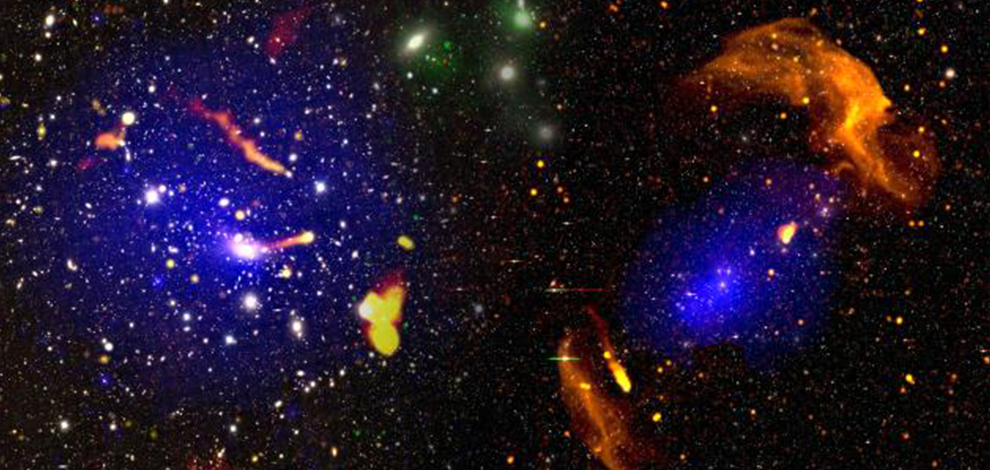Am Montag, den 30. Juni 2025, um 12:00 Uhr c.t., hält Jun.-Prof. Dr. Christopher Riseley im Rahmen unseres Physikalischen Kolloquiums seinen Antrittsvortrag.
Riseley ist Juniorprofessor für Radioastronomie an der Fakultät für Physik und Astronomie. Sein Vortrag trägt den Titel „Cosmic Rays and Perfect Plasma: Lessons Learned From Galaxy Clusters“.
Residing at the nodes and intersections of the Universe’s large-scale structure known at the Cosmic Web, clusters of galaxies form the largest gravitationally-bound objects in existence. While the galaxies number in the hundreds to well over a thousand in the richest clusters, they constitute only a tiny fraction of the overall mass budget. Dark matter provides some 80% of a cluster’s mass, whereas the vast majority of baryonic matter resides in the intracluster medium, or ICM, a hot and tenuous magnetised plasma in which the cluster galaxies live and evolve. Galaxy clusters are ideal laboratories to study a wide range of (astro- /particle-)physical processes. Due to its fully ionised nature and large mean free path, the ICM could be considered the most perfect plasma in the Universe, with evolutionary processes mediated by magnetic fields on the largest scales. These are not static environments, and clusters evolve through a broad range of interactions, from low-energy events like accretion of material through to dramatic merger events. Major mergers in particular deposit tremendous quantities of energy into the ICM via turbulence, shocks, bulk motions, and more. These processes drive the evolution of the ICM and its magnetic field, and can give rise to spectacular sources of diffuse synchrotron emission, such as the canonical relics, haloes, and mini-haloes that have been found in numerous clusters to-date.However, in untangling the nature of these diffuse synchrotron sources, many open questions remain. The lines of research we are pursuing as a community include: how are these sources generated? What particle acceleration mechanisms are at work in the ICM? What is the connection between the thermal components of the ICM (the hot plasma) and the non-thermal components (relativistic electrons and magnetic fields)? What role do cluster-member galaxies play in seeding diffuse synchrotron sources?
In this talk, I will present an overview of our understanding of diffuse synchrotron sources in clusters and how they are generated. I will then discuss some of the open questions in the field, and the observational techniques we are using to try and unearth the answers using cutting-edge data from across the electromagnetic spectrum, in particular highlighting the work being done with the Square Kilometre Array (SKA) Pathfinders and Precursors. In doing so I will discuss my plans for my research group at AIRUB and how we will work to address some of the biggest sources of uncertainty in our understanding of the physics of the intracluster medium.
Abstract des Vortrags von Prof. Riseley.
Prof. Dr. Hendrik Hildebrandt gibt eine Einführung in den Vortrag.
Die Fakultät lädt alle Interessierten herzlich ein. Die Veranstaltung findet im Hörsaal HNB statt.
Alle Termine des Physikalischen Kolloquiums finden Sie hier.
Foto: Abbildung des Sternenhaufens Abell 3266, © Riseley


